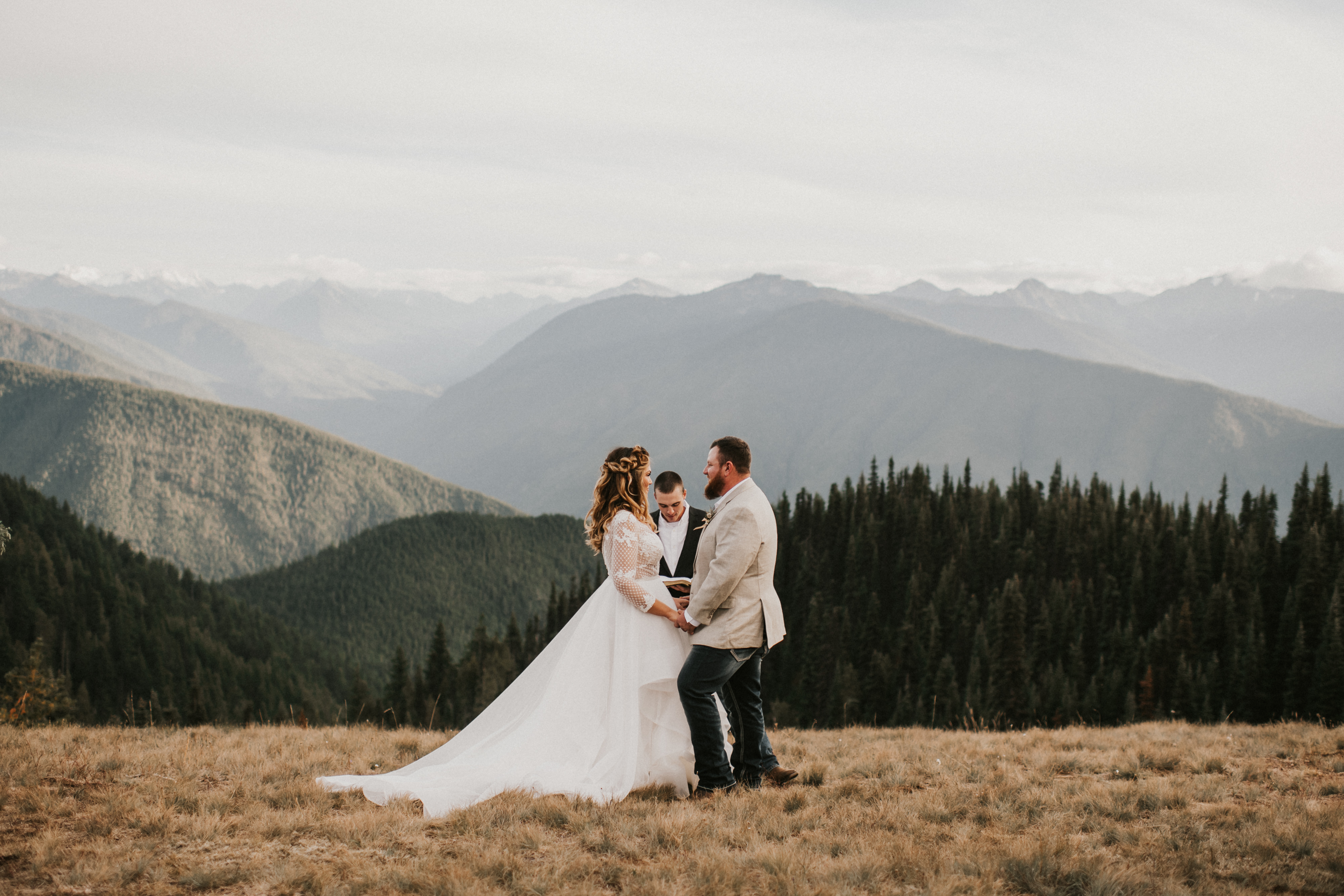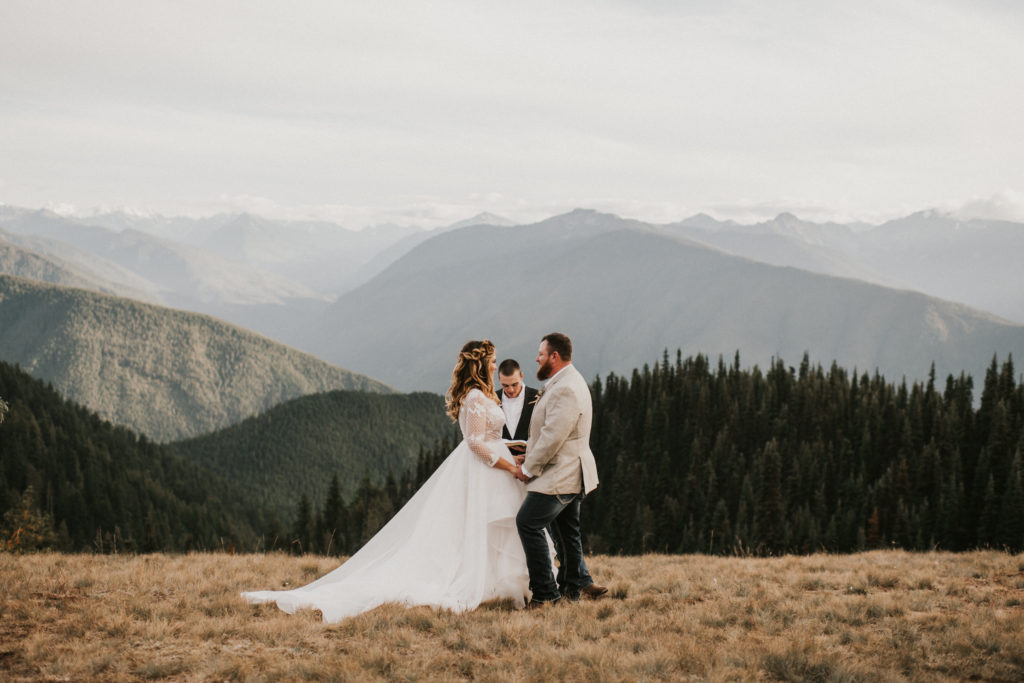
Elopements & adventure weddings have become increasingly popular, adding to the tens of millions of people that visit our public lands each year. The majority of people never intend to do harm but our presence can certainly take a toll. These areas suffer from litter, animals have become too comfortable with humans and trails have begun eroding. If you haven’t spent much time in the outdoors (or even if you have), you may not realize that our negative behaviors make a big impact.
I grew up in the shadow of Mount Rainier, where my family volunteered as Meadow Rovers on summer breaks. We would hike the trails to check on trail makers, report animal sightings and trail violations–Did you know you could be fined, per foot print, for walking on the meadows up and Paradise and Sunrise? As a teenager, I probably thought this was boring too but unlike for many people, the Leave No Trace Principles were taught to me and instilled in me at a young age. Now, I consider them every time I work or play in the outdoors. At this point, it is relatively easy for couples to get married in the outdoors but if our industry is careless and inconsiderate, it may become more challenging in the future. Let’s not let that happen–No matter what age you are, it’s never to late to start putting the Leave No Trace Principles into practice!
So what is Leave No Trace anyway? The Leave No Trace (LNT) principles are the guidelines we should follow to best enjoy and protect our natural spaces. Rules and regulations are usually more strict at the national level but these principles are good to keep in the back of your mind anytime you go outdoors. If you’re a vendor that specializes in elopements and adventure weddings, you should be an expert in these and should consider yourself a steward of the outdoors–Educate yourselves, your couples and other vendors you work with!
Plan ahead and prepare:
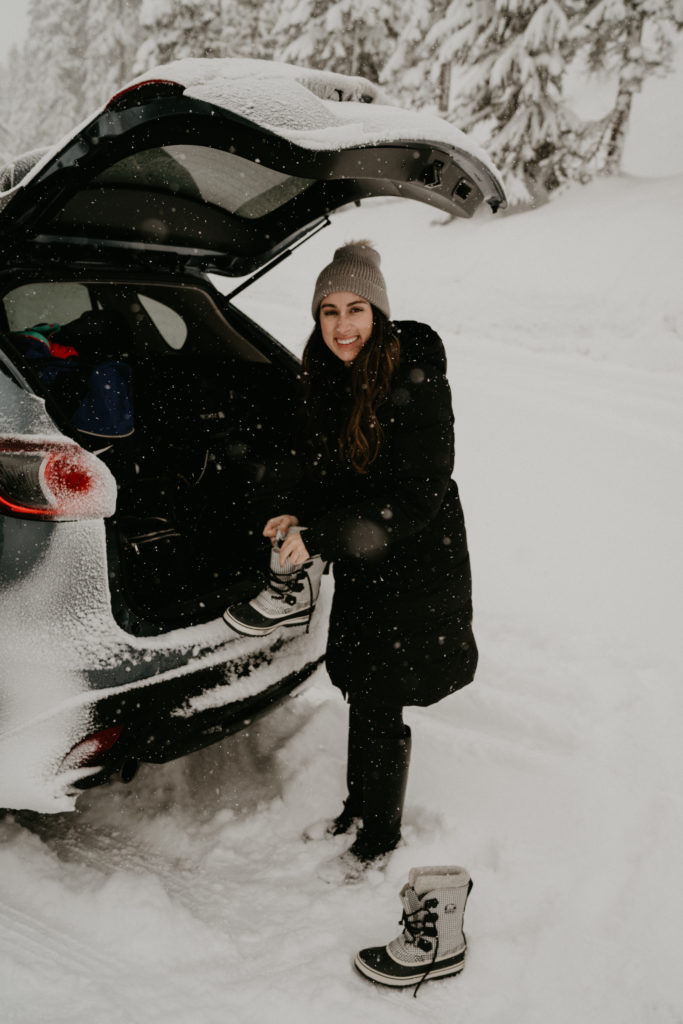
- It’s important to know the rules and regulations for the specific park/area you’re going to be visiting. If you’ve never been, we always recommend calling ahead to ask about permits and any other special considerations
- Be prepared for extreme weather, hazards and emergencies. Before heading out for your elopement or adventure wedding, check the expected weather forecast, make sure you have the right clothing and gear and always remember to fill up your gas tank!
- Vendors, your couples look to you as their guides–Don’t take couples to places you’ve never been, into weather you’re not comfortable in yourself or to do activities you’ve never done on their wedding day. It’s not the time for a test run. Not only could it hinder your ability to do your job, it could actually be dangerous!
- Keep an emergency kit in the car and on your person, especially in the winter or when poor weather conditions are in the forecast. Think chains, snow shovel, hand warmers, a blanket, extra gloves, snacks and water. See The 10 Essentials recommended for every adventure
- To lower your impact, avoid times of high use. We recommend scheduling elopements on the weekdays!
- Smaller groups do less damage and will make for a better experience for you and other visitors! We recommend, at the very max, 25 people
EXPLORE RELATED BLOG POSTS:
Travel, camp and elope on durable surfaces:
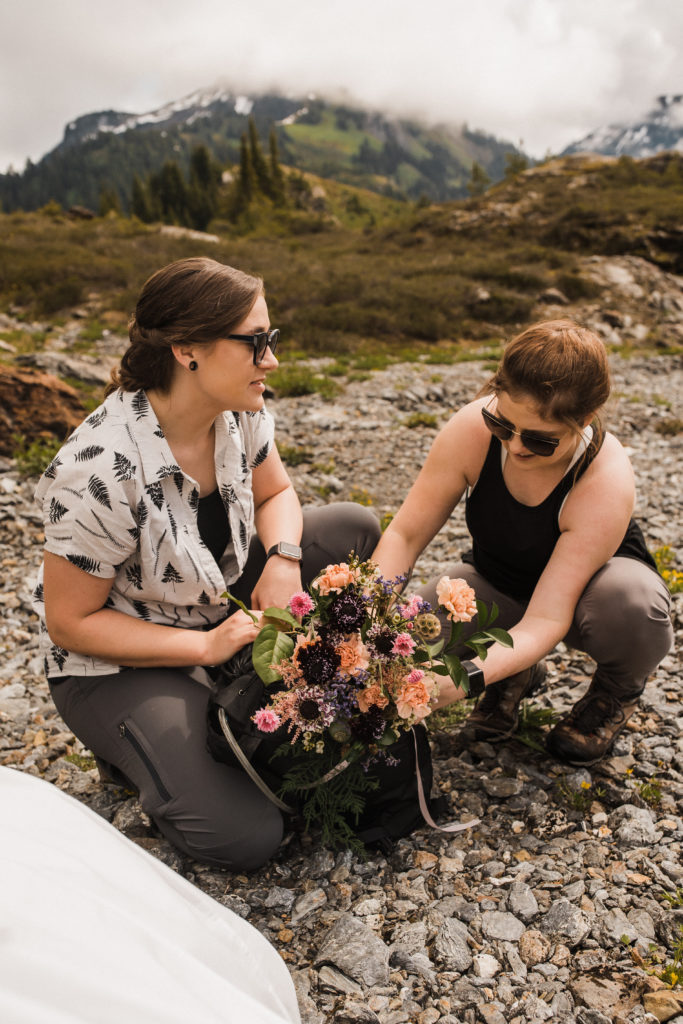
- Durable surfaces include established trails, designated picnic areas and campsites, rock, gravel, dry grasses and snow
Properly dispose of waste:
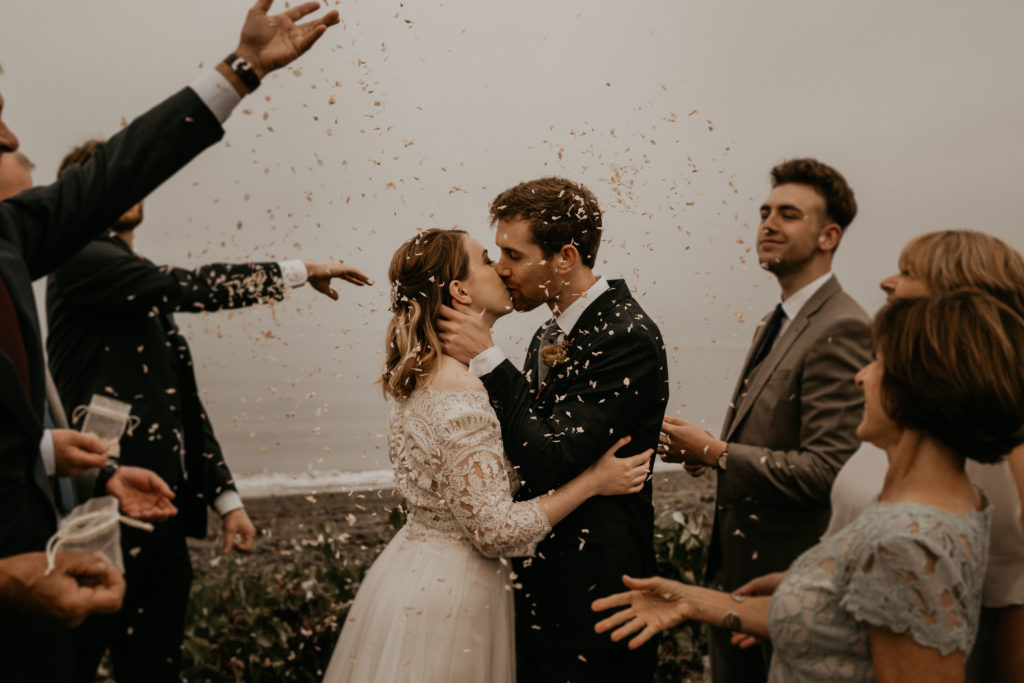
- Pack it in, pack it out! This should seem obvious but PICK UP AFTER YOURSELVES! I don’t know how many times we’ve been to popular locations and had to pick up after other couples/vendors (disposing of plastic water tubes for flowers or picking confetti out of lakes/ponds). I know flowers are biodegradable but take those too, take everything that isn’t natural to the area, take anything you brought!
- Speaking of confetti–We recommend against it but if confetti is a must have, opt for dried flower petals! They are biodegradable and it’s obvious they aren’t trash, unlike some other eco-friendly options. In the past, we’ve used the rice paper confetti that melts away when it gets wet but if it doesn’t rain, it looks like garbage for days. While we know it will melt away, others don’t and it may ruin their experience. Check out Charismas Confetti Co.–We love their dried flower petal confetti!
- Go to the bathroom at least 200 feet from rivers, streams, lakes, etc. to avoid polluting water sources
- If you have to go number 2, bury it 6-8 inches deep. Make sure you pay attention to the signs at trail heads as some are now asking that you pack out your business
Leave what you find:

- Don’t build structures, bring in furniture or dig. This means no arches, tables, chairs, etc., unless you have a permit/permission and are setting up on a durable surface
- Foraging is fun and it may seem cute to pick your own wildflower bouquet but if you’re on federal lands (National Parks, National Forests, National Monuments), it’s ILLEGAL to pick plants! Many of these areas are already fragile and undergoing restoration. Find a local florist and ask them for a wildflower-style bouquet that uses local and in-season blooms. This is sustainable, supports multiple local businesses (florist, markets + growers) and will be just as beautiful!
Minimize fire danger:
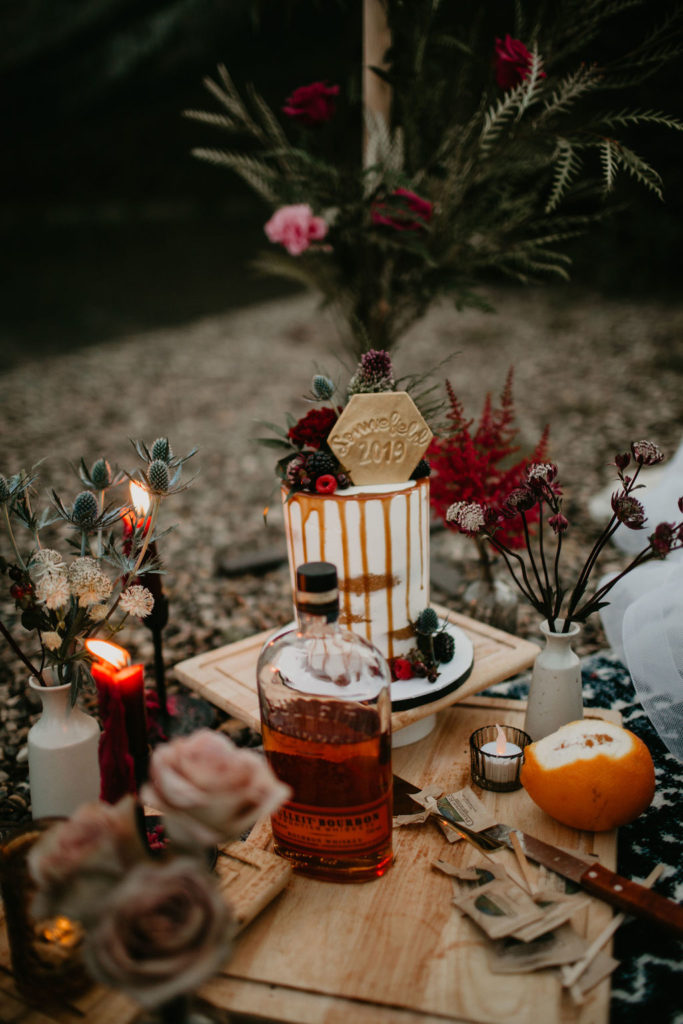
- If you plan to incorporate sparkers or candles, be sure to check current burn bans. LED candles are a good substitute!
Respect wildlife:

- Do not feed the animals! Feeding animals can be harmful to their health and cause them to become habituated with humans, possibly putting them and you in danger
- Don’t throw (as confetti) rice, non-native seeds or other foods that aren’t a part of the native animals’ natural diets
- Store trash in proper waste receptacles or again, pack it out!
- Observe animals from a distance, they are not photo props and can be dangerous, especially during mating season or if they have babies!
- Control pets at all times or leave them at home
Be considerate of other visitors:

- Don’t hog the best view points for photos and ceremonies. Even with a permit, you can’t block off an area or ask other people to leave/to not watch
- Limit music as much as possible and make sure it isn’t too obnoxious or profane. Avoid using amplified noise as much as possible. Mics and big speakers are not necessary for these types of weddings
- Yield to others on the trail, especially if traveling as a large group
Geotagging & Social Media:
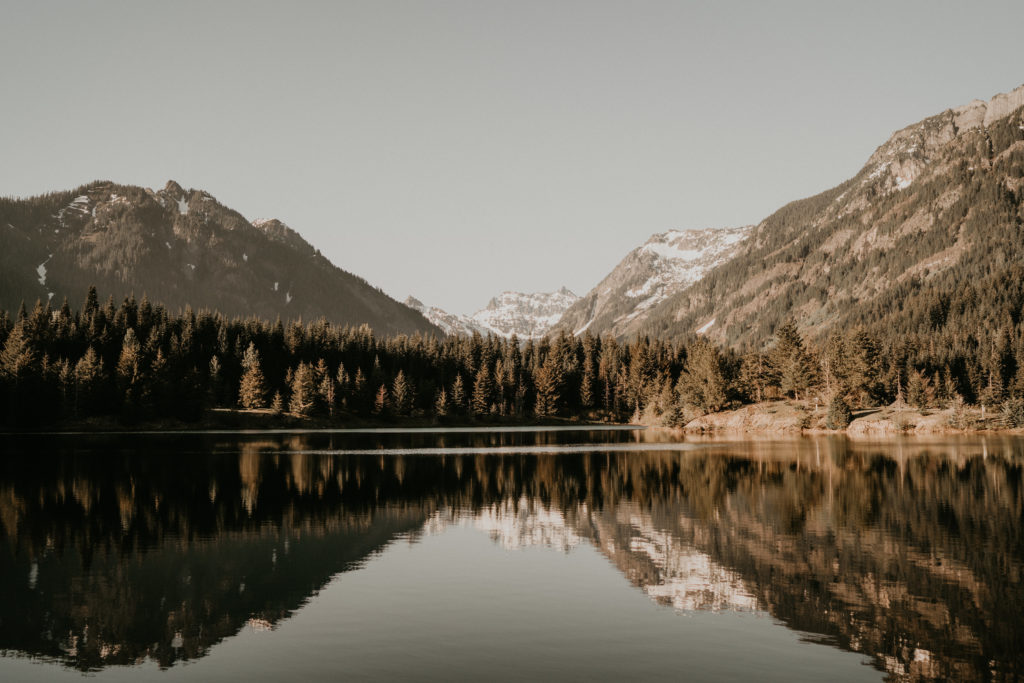
- While I am all for sharing trails, camping spots, etc. in real life, be careful when tagging specific locations on social media. The rise in social media has significantly increased traffic to many popular and previously lesser known spots, which has also increased the wear and tear
- Make sure the photos you post don’t promote poor LNT practices. For example, feeding wildlife, stomping through meadows or throwing bouquets off cliffs
- Educate (don’t shame) each other! Social media is a powerful way to get the word out and raise awareness
As someone who claims to be an expert on elopements and adventure weddings, I take these principles seriously and believe they are essential to preserving our natural lands! Be safe & respectful out there!
Need help planning your elopement or adventure wedding? Contact The Greatest Adventure Weddings & Elopements to set up a complimentary consultation!
Cheers & happy planning!
Erika
